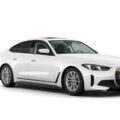Manager Magazin is one of the leading German business monthly publications and in the last months has followed very closely the rise of Harald Krüger as the new CEO of BMW Group. The latest issue has the cover story dedicated to Krüger and his vision for BMW.
BMW to offer a fully integrated customer experience
According to the magazine, Harald Krüger, who has replaced Norbert Reithofer as the CEO starting this May, would like to turn BMW more towards the digital world and work on the brand appeal – the “digital cool factor.”
The model is Apple, which has taken a German invention – the MP3, and turned it into a successful business model, beyond the hardware. And, in a true Apple fashion, Krüger would like to make the costumers buy the hardware (the cars) for the apps and the software (the services, like the ones offered by Connected Drive, or the ones developed through the BMW i Ventures).
As a member of the board of management, long before taking over as CEO, Krüger has advocated for this change in strategy. And now the new change should come by the end of the year.
Tim Cook, who is a BMW i8 driver (Editor note: we were not able to confirm this at the moment) has visited BMW in Germany last year. He left Munich as friend of former CEO Norbert Reithofer, but not as partner, as the two companies did not signed any collaboration agreement. Many rumors today revolve around BMW i being a great platform for Apple to develop cars.
But Krüger has a lot of challenges in implementing his new strategy.
First of all, the new services and apps are not bringing profits directly (which is also a big challenge), but may in the end convince the costumers to pay more for the product, exactly as Apple does it.
Also, Krüger has a completely different, more “polite” management style, compared to Reithofer. The ones who don’t know him have perceived this as a weakness. Those who are close to him, say that although he may not appear resolute, he is very focus and follows his goals until the very end.
China’s automotive landscape has changed. No supercar in near sight
The market situation is also very difficult. China’s automotive market, which was not only the largest in sales, but also brought the largest margins, is in decline. That has an additional side effect, as all premium manufactures are trying to compensate the sales decline with a better performance in US, which again brings more pressure on the margins there. Add to that Russia, with volumes for the first six month of 2015, at the half of 2013 performance. In order to compensate for the loss in sales, a plan for cost cutting from 2013 was reactivated aiming to save several hundred million euros per year. Unfortunately the collateral damage is the long awaited sports car taking on the Mercees-Benz AMG GT and the Audi R8 which will not be built in the near future.
Full support of shareholders and Quandt family
Krüger also has to face a mentality problem with his management, as they come after long years of being number one in the premium market and with EBIT margins of more than 8% in the last 5 years. So they are not as motivated as the ones who follow them – Audi and Mercedes.
Still, the new CEO has some aces up his sleeve. He has the full support of the main shareholders, Susanne Klatten (who favors a long term strategy before immediate profits) and Stefan Quandt (also engaged in other high tech business, such as Solarwatt). Krüger is backed also by Manfred Schoch, the union leader who has an important voice in the board of directors – they worked together successfully on labor organization in Dingolfing plant in 2008-2009, and Schoch supports him ever since. Former CEO Norbert Reithofer, and now the new board of directors chairman, advocates for Krüger.
In the board of the management, he has also the backing of the most important members: Friedrich Echiner (responsible for finance, he was also Krüger’s mentor) and Klaus Frölich (responsible for production and replacing Krüger in this position).
Schooled in many areas withing BMW
Furthermore, Krüger has an excellent performance record within BMW. He supported Reithofer in restructuring the production network after the sale of Rover. He was the one that managed the X3 development in 2003 while being the first time that BMW outsourced production, a taboo topic up to that point and a powerful example of disruptive strategy. And the project proved to be very successful.
Afterwards, Krüger was in charge of the former Rover engine factory in Hams Hall which was not running at full capacity and did not have the necessary budget for innovation and R&D. After three years, the plant was producing cars more effective with lower costs than the competition. As a reward, he got a board position responsible for Human Resources. He had several board positions ever since, accumulating a lot of experience.
The future of BMW i

In the quest of refocusing the BMW strategy, one of the challenges will be the development of BMW i. Now, although not selling in high volumes, BMW created the Apple-like image for their brand. After Reithofer’s hesitations, there will be a decision by the end of the year for expanding the i-range. There should be an electric SUV and there might even be an i8 roadster. The challenge is to develop the model when the technology is up to the task. For example, Audi is announcing an all-electric SUV for 2018, with a range of 500 km, three times that of a BMW i3.
And there are many more threats for the brand, like the new high tech companies that would like to invest in the automotive industry and have the potential to change the way we relate to the car altogether, with autonomous driving playing a big part. Also, while cars turn digital, there is the fight on who controls the customer data: the dealers, the insurance companies, the big tech companies that are providing apps and infotainment interfaces, or the car manufacturers.
It is not the best moment in time for Krüger to become CEO – financial challenges, strong competition from many directions, the quest for the right direction and the right timing.
By the end of the year, we should be able to see the outline of the new strategy and the future will tell the right choices were made.








































































